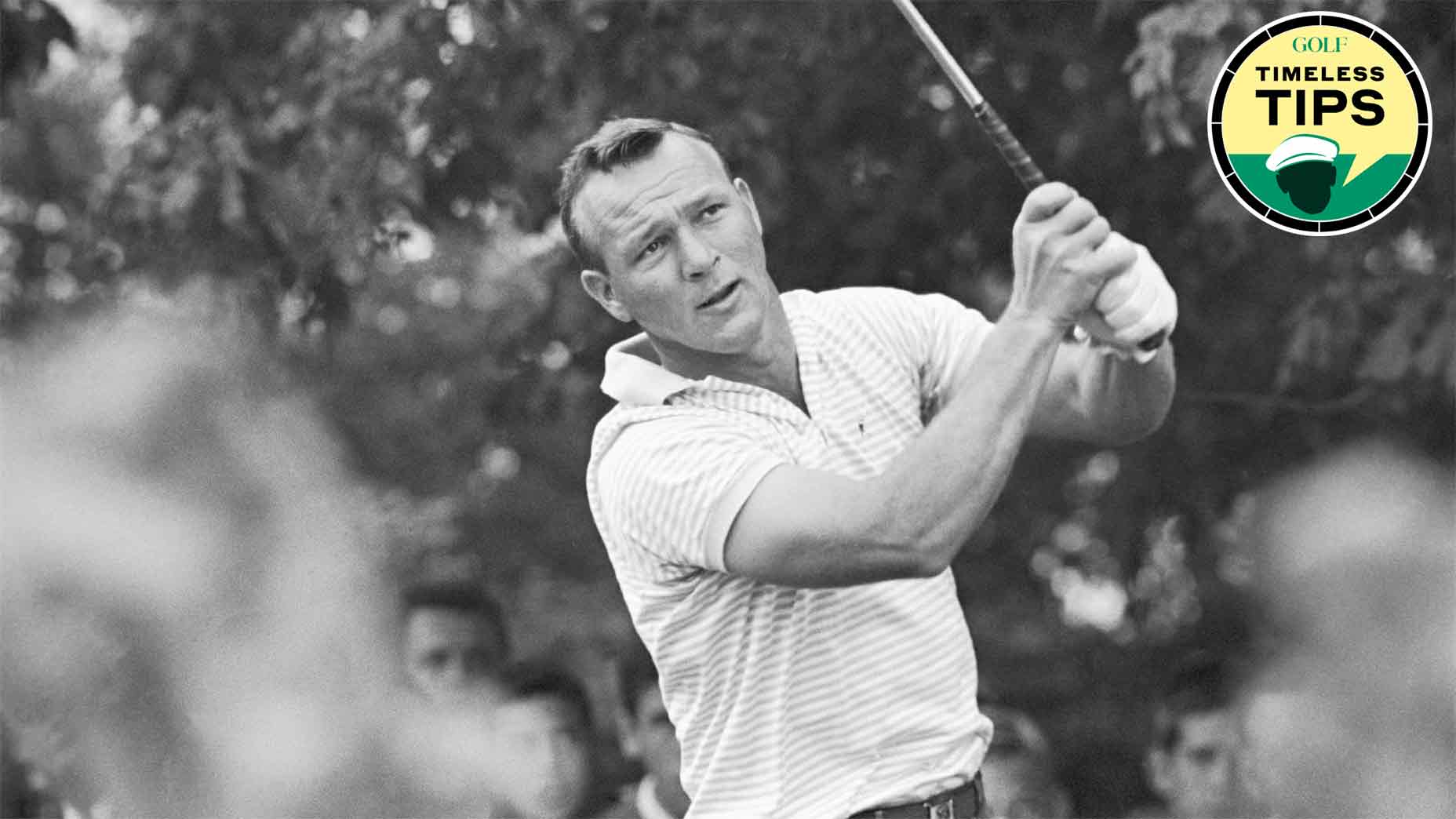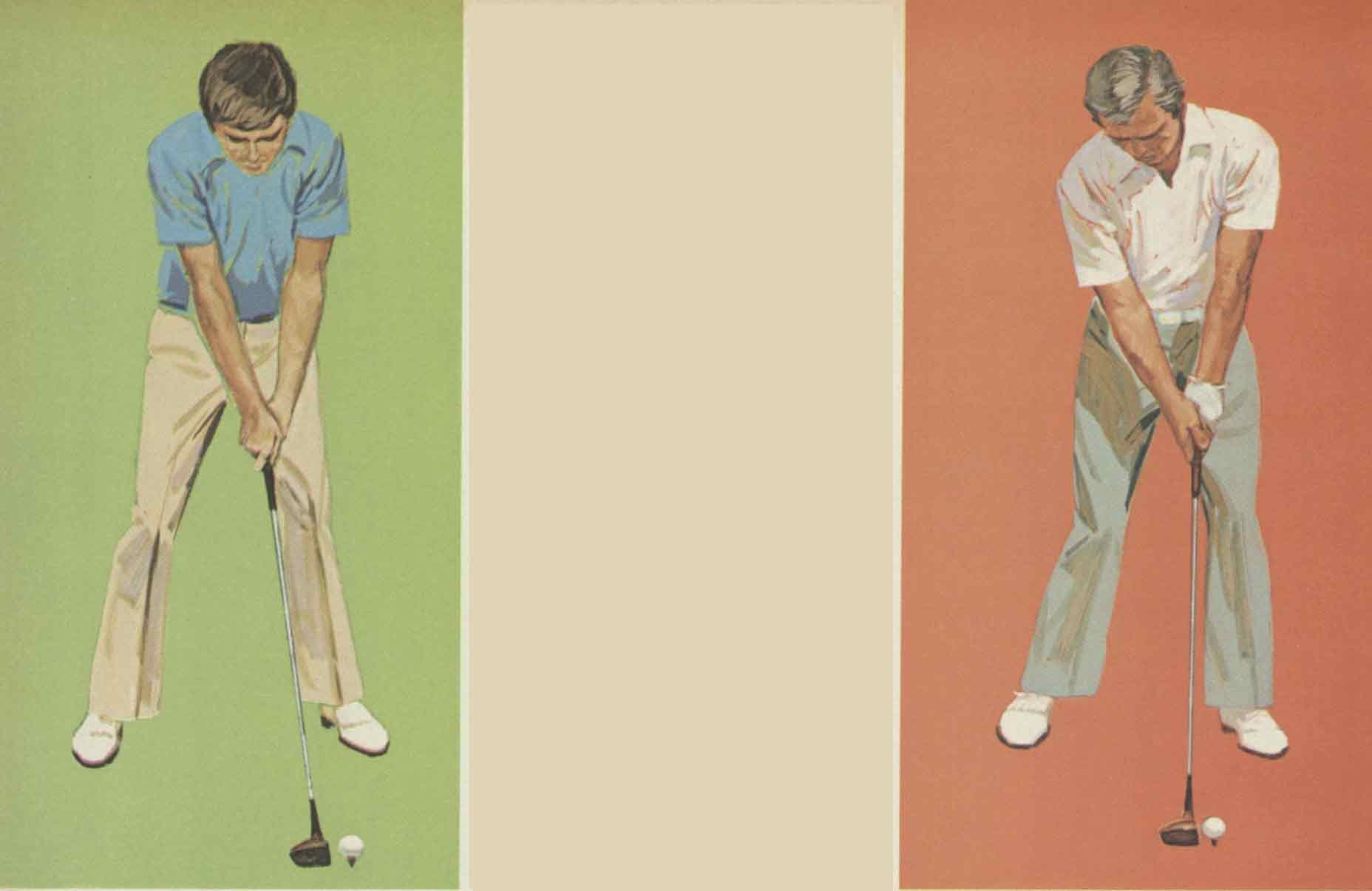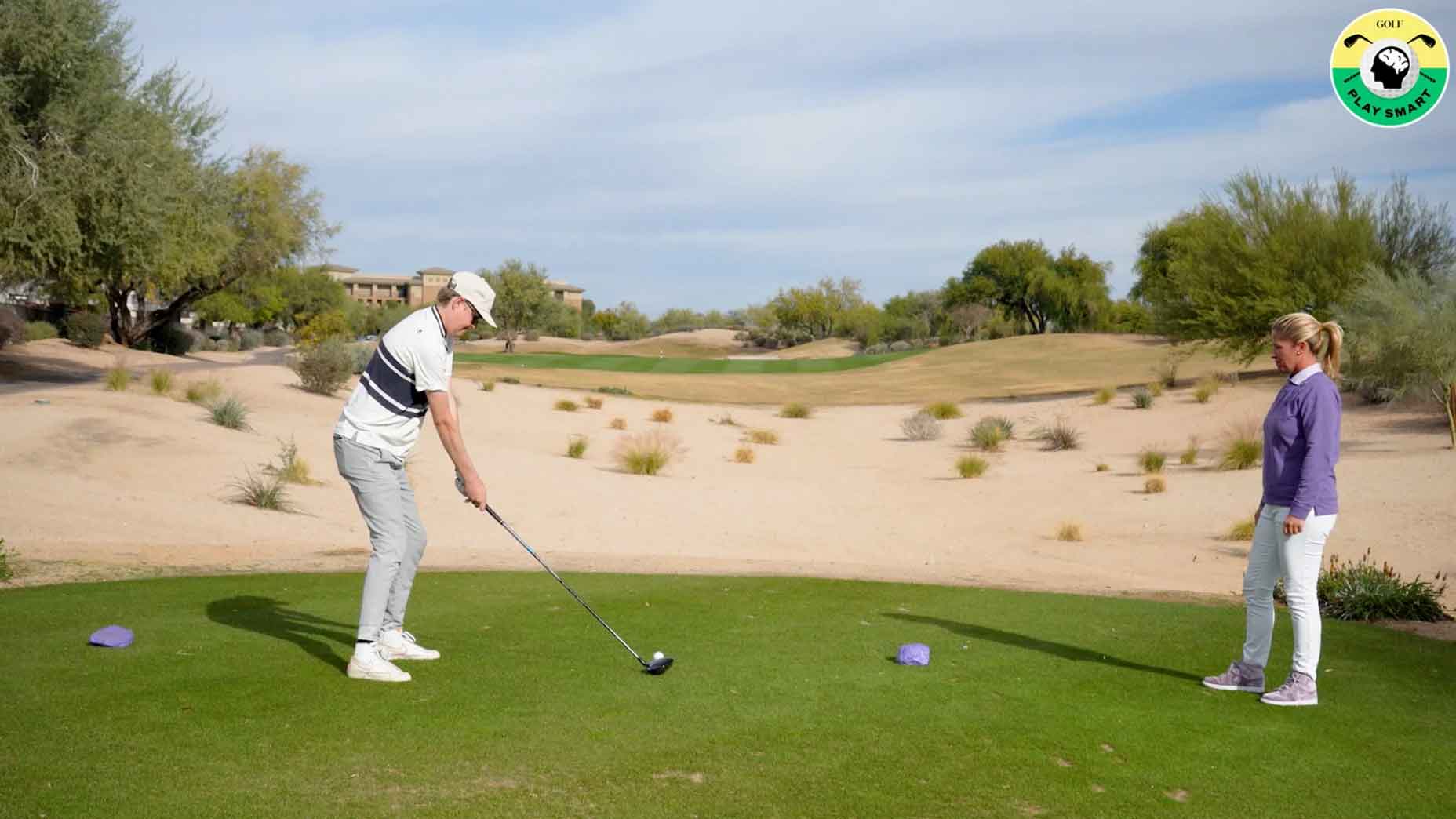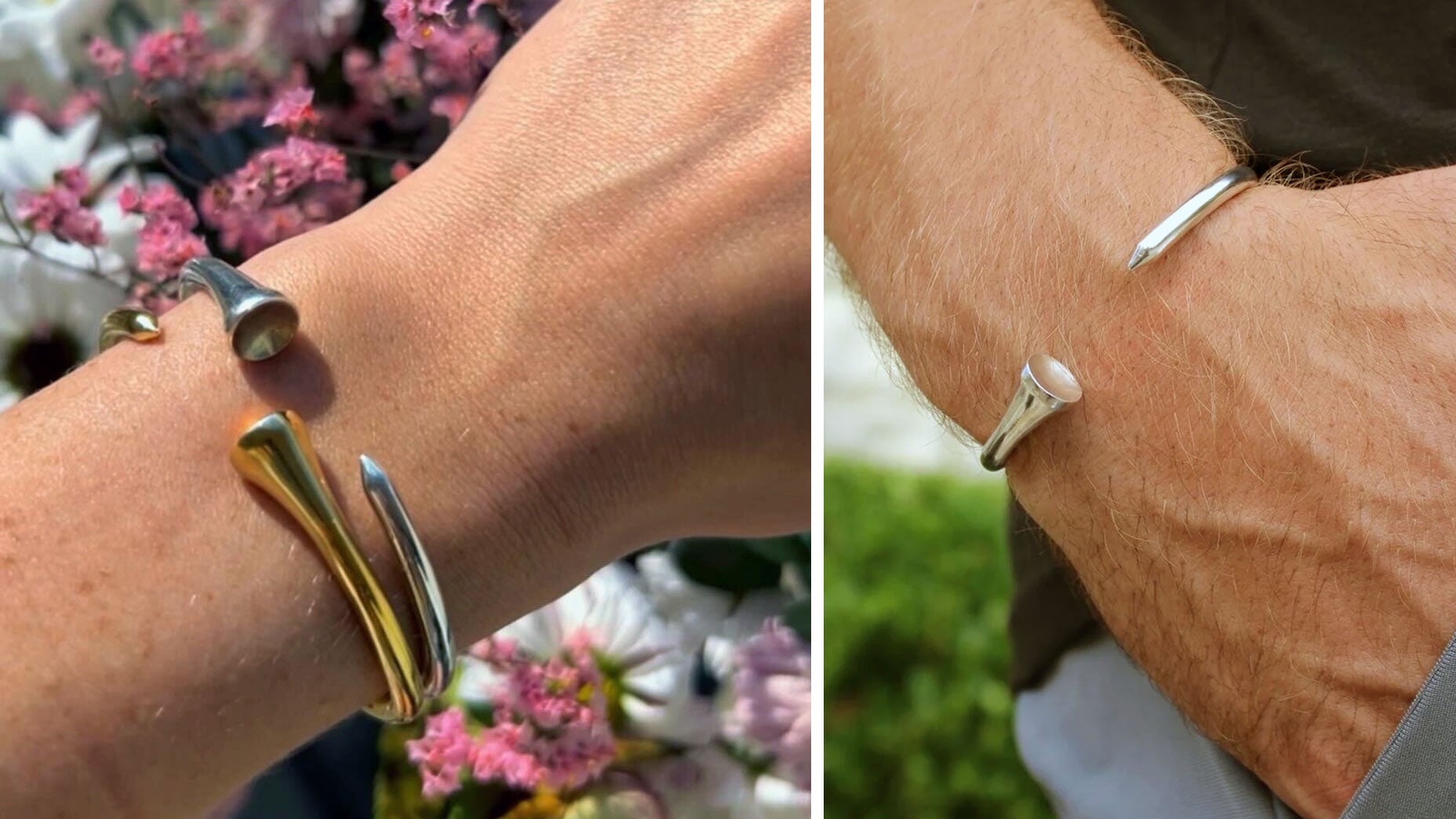
You’ll never develop maximum distance until you learn the lessons of the hook-type swing.
Getty Images
Golf instruction is ever-evolving, but the best advice stands the test of time. In GOLF.com’s new series, Timeless Tips, we’re highlighting some of the greatest advice teachers and players have dispensed in the pages of GOLF Magazine. This week, we look back at our June 1978 issue where Arnold Palmer shared the key for generating maximum power off the tee. For unlimited access to the full GOLF Magazine digital archive, join InsideGOLF today; you’ll enjoy $140 of value for only $39.99/year.
Power is a huge asset in the modern game, but that doesn’t mean the golf of yesteryear was all about finesse. Hitting the ball far has always given pros a huge advantage over their short-hitting peers.
Look at Jack Nicklaus in his prime, or Tiger Woods during his dominant run — both were longer than average, and they used that power to their benefit.
Arnold Palmer had plenty of power in the tank, too. And, in the June 1978 issue of GOLF Magazine, he explained that in order to unleash that power, it was important for golfer to have a hook swing in their arsenal.
Arnold Palmer’s key for power
Some years ago, Jimmy Demaret was answering a question from a reader in Champs’ Clinic. The golfer asked: ‘‘How do I stop slicing the ball?’’ Jimmie’s reply was: “Hook it!’’ Now that’s a funny story, but it makes a most important point and it also answers the question that golfers most often ask me, namely: “Arnie, how do I get more power?’’
To get maximum distance, you’ve got to learn to hook the ball. There is no other way.
You can’t fight city hall. Just about every fine golfer I’ve ever known has started out as a hooker of the ball and later learned to control it. Hogan did it, Snead did it and, I may add, I did it, just to name three, but the full list would be endless.
In contrast, most average golfers start out as slicers of the ball. Some remain slicers all their lives, and some fight the slice successfully enough to hit the ball reasonably straight, but in neither case do they become long, straight hitters.
We’ll now compare the slice and hook swings, and what makes them tick. When we’re through, I know you’ll agree with me that you’ll never learn to hit a long, straight ball unless at some point you’ve hooked the ball as your predominant pattern.
Slice and hook patterns
The slicer’s swing pattern (below, top )is a very weak way to hit the ball. The typical slicer swings back outside the intended flight line. Theirs is a right-sided effort that is more of a lift than a swing. At the top, the club usually points to the left of a line parallel to the target line. Their alignment also blocks a full windup. On the downswing, they return to the ball from outside in, and often more outside in than the backswing swing path; this is the worst move you can make if you want power. As the club is pulled across the ball with an open clubface, a weak glancing blow is imparted to the ball.

GOLF Magazine
The hooker’s swing pattern (above, bottom) is a strong one. His swing starts to the inside and his left side leads the swing. The windup of the body is tremendous, with the club crossing a line parallel with the target line at the top. On the downswing, they stay under very well and as a result the downswing line is even more inside to out than the backswing path, a move that leads to a strong release and maximum force.
Slice and hook grips
The slicer’s problems stem from their grip. Both hands are turned too far left on the club, with the V’s pointing to his chin. This “weak” grip encourages closing the clubface going back and opening it coming through the ball. Often, they hold the club too much in the palm of the left hand. As a result, the butt of the hand is not on the grip (lower left). This leads to looseness in the swing, allowing the right side to dominate.
To learn to hook the ball, you must start with a very ‘‘strong’’ grip — both hands are turned right so the V’s point to your right shoulder (upper right). This grip encourages you to open the clubface going back and, on the downswing your forearms and hands will whip the clubface from open to closed through the ball, a very powerful move. The correct left-hand grip is a palm-finger hold with the handle running from under the butt of the hand to the first joint of the index finger. This grip allows total use of the body. The right-hand grip should be in the fingers. If correct, you will feel more pressure in the last three fingers of the left hand and middle two of the right.
Slice and hook setups
The “weak” grip induces what I call a “weak” setup (below, left). It forces the right arm away from the body and in turn forces the shoulders and hips into an open alignment, aligned to the left of a line parallel to the target line. The left arm is bent and often the ball is played too far forward. This leaves the hands behind the ball and the shaft tilted back away from the target. All these factors mean a right-sided, outside-in, slice swing.

GOLF Magazine
The “‘strong’’ grip gives a strong setup, because it forces you to make, even exaggerate slightly, all the power points (right). The ‘‘strong’’ grip puts the left side in command, in position to give the swing a wide radius. The left arm is extended firmly and the right made to bend in toward the body. At the same time, the right shoulder is set lower than the left. There’s one long line from the left shoulder down the left arm and shaft to the clubhead. The shaft is tilted slightly forward with the hands over the ball. Your stance will be square or slightly closed.
Slice and hook backswings
In the slice backswing, the right side dominates. It’s more of a pick-up and lift from the right side than a swing. The right hand and arm tend to work independently of the rest of the body and so the legs, hips and shoulders move too little and too late. The open alignment also blocks a full windup. The result is a stiff, incomplete top-of-the swing position with the clubface closed. The weak grip gives you a weak setup and results in a weak backswing.
The strong grip and setup encourage a one-piece backswing, where the hands and whole left side start together. The legs, shoulders and arms all move powerfully taking the club to the inside. The square, or slightly closed, stance and alignment also contribute to your ability to make a full hip turn, shoulder turn, arm swing and wrist cock. The strong grip also causes you to open the clubface a little by the top of the swing. You’re poised for a powerful inside move and release through the ball.
Slice and hook downswings
The weak backswing has led to a weak downswing. Because the clubface was closed going back, there was a premature right-hand throwing action from the top, working the clubface from closed to open. Because of the incomplete windup, the right shoulder tried to compensate with a heaving action bringing it over the top of the ball, and bringing the club even more from outside to in through the ball. The result is a stiff-armed, stiff-legged pull across the ball with an open clubface. Very little clubhead speed is generated, and the slice spin prevents much roll on the ball.
This is the payoff of the strong grip. Because the clubface was opened going back, there is a tremendously strong reaction through the ball — the right forearm has crossed over the left, closing the clubface powerfully through impact. Note how the right shoulder is moving under the chin, producing the inside-to-out swing path. There’s maximum use of the body, maximum clubhead speed and maximum distance.
Modifying the slice and grip patterns
If you start with a weak grip and a slice swing pattern, modifying it will prove fruitless. You can square-up your setup, but what you won’t be able to do is change your swing pattern. You try to swing back to the inside, but due to the swing habits you’ve formed, you still come over the top; your downswing path will still be outside your backswing path. The ball will still tend to fade and your swing will lack the full windup and strong body movement essential for power.
When you adopt the “strong” grip and hook swing pattern, you must stay with them until the power points — strong setup, inside take-away, full windup, staying under and the strong release — are a habit. This could take a matter of months up to a full season. Then you can modify the pattern by squaring your setup and weakening your grip to the point where you hit the ball straight. However, the power points will still be built in, and you’ll find yourself hitting farther than ever.









